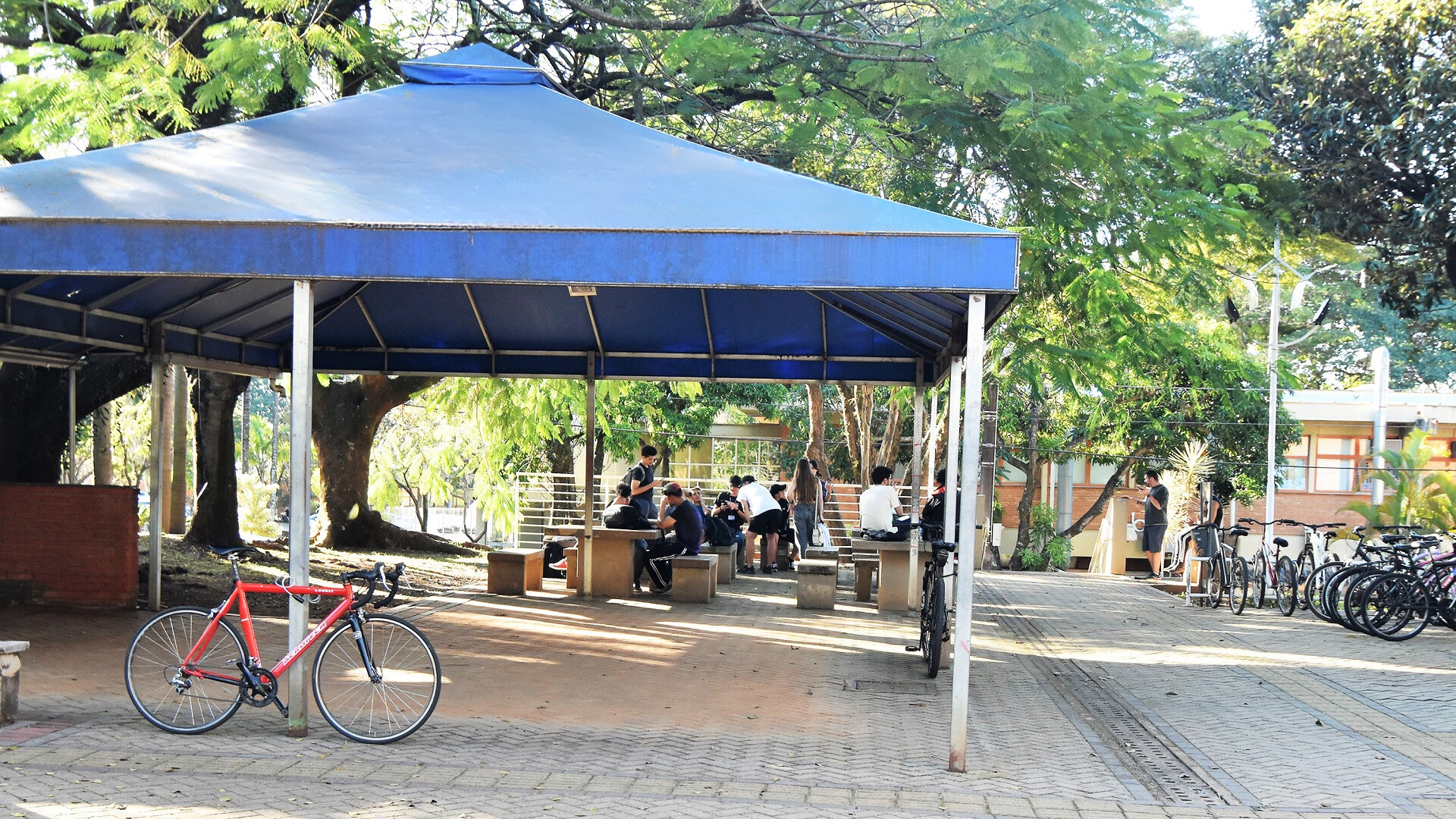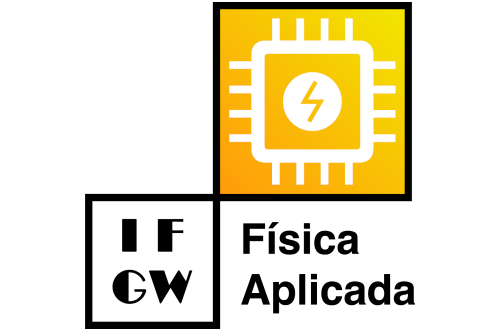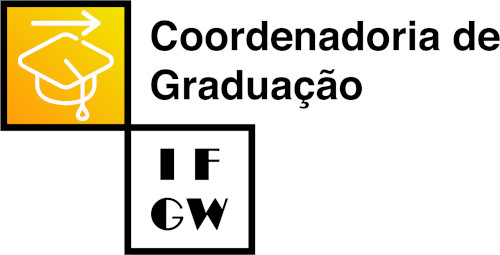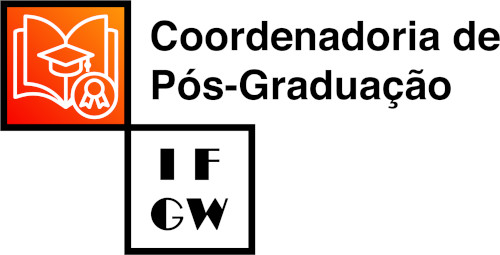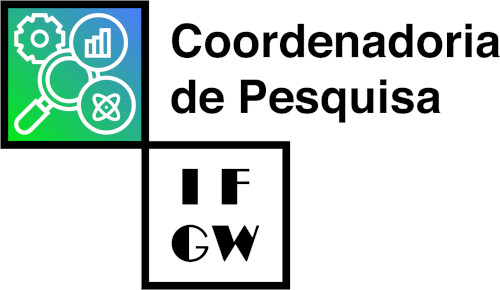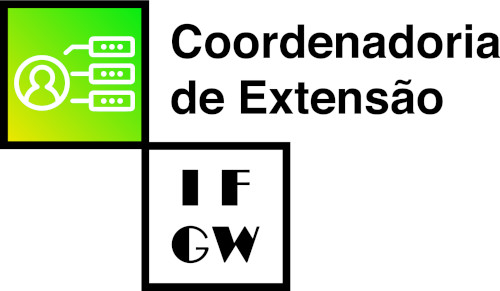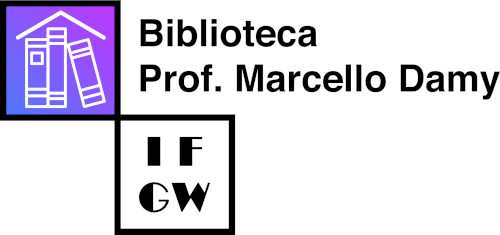Colóquio da Pós-graduação:Título: "Giorgio Parisi: Spin glasses, complexity and all that" Palestrante: Prof. Sérgio Magalhães (Universidade Federal do Rio Grande do Sul) Data: 02/12/2021 Clique aqui para assistir a apresentação. In this seminar, I present the contributions made by Giorgio Parisi in disordered complex systems which granted to him the Nobel prize 2021. Indeed, the theory created by Parisi to deal with disordered complex systems has generated such an overpowering conceptual framework that it spilled over into other areas of knowledge as distinct as mathematics, biology, neuroscience, and computation. The starting point, according to Parisi himself [1], is that disorder generates complexity. In that sense, the spin-glass systems discovered in the mid of 70's last century served as the suitable platform to unveil this relationship between disorder and complexity. Therefore, I explain some experimental aspects of the spin-glass problem in order to situate the problem and the level of difficulty for its description. Next, I discuss theoretical attempts which, although failed to provide a satisfactory description of the original problem, introduced some fundamental technical aspects such as the replica method. In particular, it is reviewed the mean-field Sherrington-Kirkpatrick theory and replica symmetry solution. Then, I move to the famous Parisi solution for breaking the replica symmetry. Firstly showing the one-step replica symmetry breaking (RSB) and the final formulation, the so-called full step RSB. Next, it is examined the nature of the spin-glass phase that emerges from the Parisi solution and the concept of ultrametricity. With that, I give a brief summary of the use of Parisi's theory beyond physics. Finally, the actuality of the Parisi solution is debated in view of the discovery of the presence of spin glass-like phases in several condensed matter systems that are currently being studied. [1] G. Parisi, Physica A, 194 28-40 (1993). |
Colóquio da Pós-graduação:Título: Nós Avisamos! (A Física do Clima para muito além de um Nobel) Palestrante: Prof. Alexandre Costa (Universidade Estadual do Ceará) Data: 04/11/2021 Clique aqui para assistir a apresentação. Em 2021, o Prêmio Nobel de Física foi concedido para estudiosos de "sistemas complexos", com destaque para o clima global. Mas a Ciência do Clima tem uma história que vai muito além desse prêmio, primeiro desvendando os aspectos fundamentais da Física do Sistema Climático e, depois, emitindo alertas há décadas e enfrentando ataques desleais de um negacionismo organizado (em especial sob patrocínio das gigantes do setor de combustíveis fósseis). A grande tragédia é que a história foi muito além do meme "todo filme de catástrofe começa com um cientista sendo ignorado". Uma comunidade científica inteira e a mensagem séria que ela portava foi mais que ignorada: foi sabotada e aviltada. Hoje, o quadro é de emergência climática e se a Ciência do Clima não recebeu atenção, o Sistema Climático já se comunica à humanidade do seu próprio jeito. |
Colóquio da Pós-graduação:Título: Computador Quântico: para que serve e como construir um Palestrante: Prof. Fernando Brandão (California Institute of Technology - CALTECH) Data: 28/10/2021 Clique aqui para assistir a apresentação. Nessa palestra iremos discutir a utilidade de futuros computadores quânticos e os desafios para construir hardware quântico em grande escala. |
Colóquio da Pós-graduação:Título: Irreversibility as “irretrodictability” Palestrante: Prof. Valerio Scarani (Centre for Quantum Technologies, National University of Singapo Data: 07/10/2021 Clique aqui para assistir a apresentação. Both classical and quantum theory hold that every change is reversible at the fundamental level, although we perceive almost everything as irreversible processes. Yet, physicists are not urging to label that perception as illusory: for most, the Second Law of thermodynamics is untouchable, so aberrant the idea of inexhaustible energy is. Building on a narrative pioneered by Watanabe in the 1960s, I shall present an approach to the Second Law as a form of statistical inference given partial information. Irreversibility is unavoidable because it translates the asymmetry between prediction and retrodiction on a given process. This viewpoint applies to both classical and quantum systems. Applied to the “fluctuation relations” that have been the preferential tools to address irreversibility in the last two decades, it both simplifies their derivation and vastly expands their scope. |
Colóquio da Pós-graduação:Título: Li5C, UM NOVO ELETRETO SUPERCONDUTOR? Palestrante: Prof. Edison Zacarias da Silva (IFGW-UNICAMP) Data: 09/09/2021 Clique aqui para assistir a apresentação. A moderna estrutura eletrônica de sólidos baseada no funcional de densidade (DFT) evoluiu muito desde a década de 80 e hoje tem capacidade preditiva. Novos materiais são previstos via simulações computacionais e posteriormente produzidos no laboratório. Usando técnicas de busca como o método CALYPSO, associado a cálculos de DFT, propomos a existência de um novo material, o Li5C, um eletreto que, em uma faixa de pressões tem estrutura estável. Aliando a moderna estrutura eletrônica com resultados da teoria da supercondutividade (tipo BCS) para materiais com interação elétron-fônon forte, também estudamos a existência de supercondutividade neste material, que segundo nossos estudos, apresenta a maior temperatura crítica entre os eletretos já reportados na literatura. |
Colóquio da Pós-graduação / SCES Webinar SeriesTítulo: Multidimensional entropy landscape of quantum criticality Palestrante: Prof. Hilbert v. Löhneysen (Karlsruhe Institute of Technology, Germany) Data: 29/07/2021 Clique aqui para assistir a apresentação. The Third Law of Thermodynamics states that the entropy of any system in equilibrium has to vanish at absolute zero temperature. At nonzero temperatures, on the other hand, matter is expected to accumulate entropy near a quantum critical point (QCP), where it undergoes a continuous transition from one ground state to another as a function of a non-thermal tuning parameter [1,2]. Based on general thermodynamic principles, we determine the spatial-dimensional profile of the entropy S near a QCP and its steepest descent in the corresponding multidimensional stress space. We demonstrate this approach for the canonical quantum critical compound CeCu6-xAux near its onset of antiferromagnetic order [3]. We are able to link [4] the directional stress dependence of S to the previously determined geometry of quantum critical fluctuations [5]. Our demonstration of the multidimensional entropy landscape can be generalized to other tuning parameters and may provide the foundation to understand how quantum criticality nucleates novel phases. |
Colóquio da Pós-Graduação:Título: AstroBioQuímica: Estudo de moléculas orgânicas em galáxias ativas Palestrante: Profa. Dinalva A. Sales (Universidade Federal do Rio Grande) Data: 26/08/2021 Clique aqui para assistir a apresentação. Uma fração considerável do carbono no meio interestelar (ISM), aproximadamente 20% ou mais, está na forma de hidrocarbonetos aromáticos policíclicos (PAHs) e acredita-se que os PAHs são moléculas orgânicas que podem ter contribuído para a construção do material pré-biótico que formou a vida na Terra. Os espectros no infravermelho médio (MIR) de objetos galácticos e extragalácticos são dominados por bandas de emissão fortes a 3.3, 6.2, 7.7, 8.6, 11.3 e 12.7 μm, geralmente atribuídas aos PAHs e espécies relacionadas. Durante muito tempo acreditou-se que galáxias que possuem buracos-negros supermassivos (SMBH), nomeadas como núcleo ativo de galáxias (AGNs), possuem um intenso e energético campo de radiação advindo do disco de acresção do SMBH capaz de destruir as moléculas de PAHs próximas dos SMBHs dos AGNs. A falta de dados com alta resolução angular e espectral ajudou a dificultar a compreensão das propriedades físico-químico das moléculas de PAHs e seu uso como ferramenta de diagnóstico da fonte de ionização em galáxias. Entretanto, após mais de uma década de estudos usando dados observacionais dos telescópios Spitzer e Gemini, assim como bibliotecas teóricas de PAHs e técnicas de análise de sinal, foi possível demonstrar que as moléculas de PAHs em AGNs, além de serem maiores (> 180 átomos de carbono) que as moléculas encontradas em galáxias com formação estelar (< 180 átomos de carbono) também possuem, em sua maioria, moléculas de PAHs com diferentes graus de ionização. |
Colóquio da Pós-Graduação:Título: Agregação orientada e coalescência em nanoestruturas Palestrante: Prof. Giovani M. Faccin (UFGD) Data: 10/06/2021 Clique aqui para assistir a apresentação. Fenômenos de auto-organização possibilitam a síntese de materiais com padrões estruturais peculiares e potencialidades tecnológicas. Neste colóquio discutiremos um panorama geral mostrando exemplos que ilustram a variedade de processos e mecanismos físicos que atuam durante a agregação de precursores para a formação de mesocristais. Paralelamente, apresentaremos exemplos de como métodos de simulação computacional podem ser empregados para contribuir para o avanço desta área. |
Colóquio da Pós-Graduação:Título: Can wobbling muons probe physics beyond the standard model? Fermilab’s Muon g-2 Run 1 results Palestrante: Dra. Jessica Esquivel (Fermilab, EUA) Data: 01/07/2021 Clique aqui para assistir a apresentação. On April 7th 2021, Fermilab’s Muon g-2 experiment announced it’s first results of the precision measurement of the anomalous muon magnetic moment based on it’s 2018 Run-1 dataset. These results align with the Brookhaven National Laboratory experimental value and the combined values increases the tension between experiment and theory from 3.7 to 4.2 sigma. This talk will give an overview of the Fermilab Muon g-2 experiment, discuss the steps necessary to precisely measure wobbling muons, why this result has the physics community abuzz, and what’s next. |
Colóquio da Pós-Graduação- SCES Webinar Series:Título: Selective excitation of electrons in Fe-based systems using trARPES Palestrante: Prof. Kalobaran Maiti (Tata Institute of Fundamental Research, India) Data: 24/06/2021 Clique aqui para assistir a apresentação. Research in material science is becoming more and more challenging due to the discovery of coexisting mutually exclusive scenarios. For example, heavy Fermion systems, Fe-based superconductors, etc. often show coexistence of magnetic order and superconductivity. Since multiple bands form the Fermi sea in these materials, it is difficult to probe the underlying interactions leading to such complexity. In order to investigate the possibility of inducing orbital selective electron dynamics, we studied the polarization-dependent excitation of electrons using time-resolved ARPES technique. We discover that electrons of a selected symmetry can be excited using polarized pump pulse keeping other electrons relatively less perturbed. Using this technique, we showed [1] that the relaxation of mobile electrons occurs faster than local electrons in contrast to the expected behavior. This can be attributed to the electron-phonon coupling induced relaxation which occurs more efficiently for the extended states. In addition, we discover melting of magnetic order at a time scale of 50 fs. Interestingly, other excitations occurring at a time scale of about 200 fs can be induced without perturbing the magnetic order. [1] G. Adhikary, B. Ressel, M. Stupar, P. R. Ribič, J. Urbančič, G. De Ninno, D. Krizmancic, A. Thamizhavel, and K. Maiti, Phys. Rev. B 98, 205142 (2018). |
Colóquio da Pós-Graduação- SCES Webinar Series:Título Primeira Apresentação: Anisotropic superconductivity and the spin-vortex antiferromagnetism in Ni-doped CaKFe4As4 Palestrante: Isabel Guillamón (Universidad Autónoma de Madrid) Título Segunda Apresentação: Non‑Gaussian tail in the force distribution: a hallmark of correlated disorder in the host media of elastic objects Palestrante: Yanina Fasano (Centro Atómico Bariloche, Argentina) Data: 20/05/2021 Clique aqui para assistir as apresentações. Anisotropic superconductivity and the spin-vortex antiferromagnetism in Ni-doped CaKFe4As4 Quasiparticle interference and vortex imaging have both been shown to be powerful tools to investigate pnictide superconductors. Here I will review new results in the recently discovered family of 1144 materials, particularly in pure and Ni-doped CaKFe4As4. The 1144 CaKFe4As4 compound is a pnictide superconducting material showing optimal superconducting critical temperature with Tc as large as 38 K [1,2]. There are no signatures of nematic, structural or magnetic transitions. Doping with Ni induces a decrease in Tc and the appearance of magnetism. Instead of the stripe like spin density wave (SSDW) antiferromagnetic order present in the 122 systems, Ni-doped CaKFe4As4 shows a spin vortex (or hedgehog) magnetic order [3]. Here I will discuss scanning tunneling microscopy experiments in CaK(Fe0.95Ni0.05)4As4 [4]. We have determined the superconducting density of states and observed the vortex lattice. Quasiparticle interference measurements show the reconstruction of the Fermi surface due the presence of hedgehog magnetic order and the opening of an anisotropic superconducting gap, giving experimental evidence for the coexistence of both states. Finally, I will show the recent efforts made in STM for very high magnetic fields, presenting first spectroscopic data taken at 20 T. References
Non‑Gaussian tail in the force distribution: a hallmark of correlated disorder in the host
media of elastic objects Coworkers: Jazmín Aragón Sánchez, Gonzalo Rumi, Raúl Cortés Maldonado, Néstor René Cejas Bolece, Joaquín Puig, Pablo Pedrazzini, Gladys Nieva, Moira I. Dolz, Marcin Konczykowski, Cornelis J. van der Beek, & Alejandro B. Kolton Inferring the nature of disorder in the media where elastic objects are nucleated is of crucial importance for many applications but remains a challenging basic-science problem. Here we propose a method to discern whether weak-point or strong-correlated disorder dominates based on characterizing the distribution of the interaction forces between objects mapped in large fields-of view. We illustrate our proposal with the case-study system of vortex structures nucleated in type-II superconductors with different pinning landscapes. Interaction force distributions are computed from individual vortex positions imaged in thousands-vortices fields-of-view in a two-orders-of-magnitude wide vortex-density range. Vortex structures nucleated in point-disordered media present Gaussian distributions of the interaction force components. In contrast, if the media have dilute and randomly distributed correlated disorder, these distributions present non-Gaussian algebraically-decaying tails for large force magnitudes. We propose that detecting this deviation from the Gaussian behavior is a fingerprint of strong disorder, in our case originated from a dilute distribution of correlated pinning centers. |
Colóquio da Pós-graduação:Título: Raman scattering at the nanoscale Palestrante: Prof. Luiz Gustavo Cançado (UFMG) Data: 13/05/2021 Clique aqui para assistir a apresentação. The advent of nanomaterials has brought several challenges on the materials' characterization framework. These challenges open for opportunities on the development of instruments capable to overcome today's technological limitations. In optical spectroscopy, diffraction mimics the capacity of conventional optical setups to extract spectral information at the nanoscale. In this seminar, I will present recent advances on the development of a near-field Raman spectroscopy system, taking place in LabNS, the Nanospectroscopy Lab of the Department of Physics, UFMG. The instrument allows for the investigation of local properties in individual graphene nanoflakes and twisted bilayer graphene, and the information extracted from this local analysis is useful to understand statistical results extracted from measurements performed in the micro and macro scales. Supporting the instrument's technology, we have developed a new scattering-type near-field probe formed by a micro-pyramidal body whose length L is scalable to fine-tune localized surface plasmon resonance (LSPR) modes. These so-called plasmon-tunable tip pyramids (PTTPs) act as monopole antennas, as revealed by electron energy loss spectroscopy (EELS). The monopole character of the PTTP is a consequence of its geometry: the nanopiramidal part is electrically grounded on a flat metallic plateau that acts like a mirror providing the monopole's image that closes the dipole system. The talk ends with a discussion on the coherence properties of scattered fields in the proximity of the source (a material system illuminated by strongly focused by optical fields). I will demonstrate that the spatial extent of near-field correlations relies on local properties of the source which are inaccessible in the far field zone. |
Colóquio da Pós-graduação:Título: From nanotech to living sensors: unraveling the spin physics of biosensing at the nanoscale Palestrante: Profa. Clarice D. Aiello (UCLA - EUA) Data: 25/03/2021 Clique aqui para assistir a apresentação. Substantial in vitro and physiological experimental results suggest that similar coherent spin physics might underlie phenomena as varied as the biosensing of magnetic fields in animal navigation and the magnetosensitivity of metabolic reactions related to oxidative stress in cells. If this is correct, organisms might behave, for a short time, as “living quantum sensors” and might be studied and controlled using quantum sensing techniques developed for technological sensors. I will outline our approach towards performing coherent quantum measurements and control on proteins, cells and organisms in order to understand how they interact with their environment, and how physiology is regulated by such interactions. Can coherent spin physics be established – or refuted! – to account for physiologically relevant biosensing phenomena, and be manipulated to technological and therapeutic advantage? |
Colóquio da Pós-graduação - SCES Webinar Series:Título: A comparative x-ray study of UM2Si2 compounds with 5f electron duality Palestrante: Andrea Severing (University of Cologne - Germany) Data: 25/02/2021 Clique aqui para assistir a apresentação. We have carried out hard x-ray photoelectron spectroscopy (HAXPES) measurements at the U 4f core level and non-resonant inelastic x-ray scattering (NIXS) at the U O4,5 edges of UT2Si2 compounds that all form in the tetragonal ThCr2Si2 structure but exhibit different ground state properties: UFe2Si2 is a Pauli paramagnet; URu2Si2 is the famous hidden order compound of which the order parameter is still fiercely debated despite 30 years of intense experimental and theoretical studies; UPd2Si2 and UNi2Si2 are antiferromagnets with TN well above 100 K and sizeable ordered magnetic moments. We have determined the degree of the 5f-electron localization (HAXPES) as well as the symmetry of the 5f ground state wave function (NIXS) across these very different compounds. |
Colóquio da Pós-graduação - SCES Webinar Series:Título: Systematics of Superconducting Materials Palestrantes: Prof. Zachary Fisk (UCI/LANL-USA) Data: 21/01/2021 Clique aqui para assistir a apresentação. Não há resumo para esta apresentação |
Colóquio da Pós-graduação:Título: Boas Práticas de Pesquisa e a Unicamp: A Construção de uma Política Institucional Palestrantes: Prof. Jacks Jorge Junior (FOP/UNICAMP) e Prof. Roberto Donato da Silva Júnior (FCA/UNICAMP) Data: 14/01/2021 Clique aqui para assistir a apresentação. O objetivo desta comunicação é apresentar à nossa comunidade acadêmica a Política Institucional de Boas Práticas e Integridade em Pesquisa da Unicamp. Em um primeiro momento discutiremos o contexto, a abordagem conceitual e as prerrogativas da Política. Em um segundo momento, apresentaremos o arcabouço regimental e a forma de funcionamento da Comissão de Integridade em Pesquisa da Unicamp (CIP), assim como os desafios de sua implantação. Por fim, discutiremos, em diálogo com os presentes, situações e exemplos de tratamento de más práticas científicas, como forma de se ilustrar o papel e a relevância da integridade ética para a produção de científica no mundo contemporâneo. |
IFGW EM NÚMEROS
1967 - 2025
Formados
Bacharelado em Física
Bacharelado em Física Médica/Biomédica
Licenciatura em Física
Física Aplicada (curso descontinuado)
Engenharia Física
Dissertações de Mestrado
Teses de Doutorado
QUADRO ATUAL
Servidores Docentes
Pós-Docs
Servidores Técnicos e
Administrativos
Estudantes de Graduação
Mestrandos
Doutorandos












